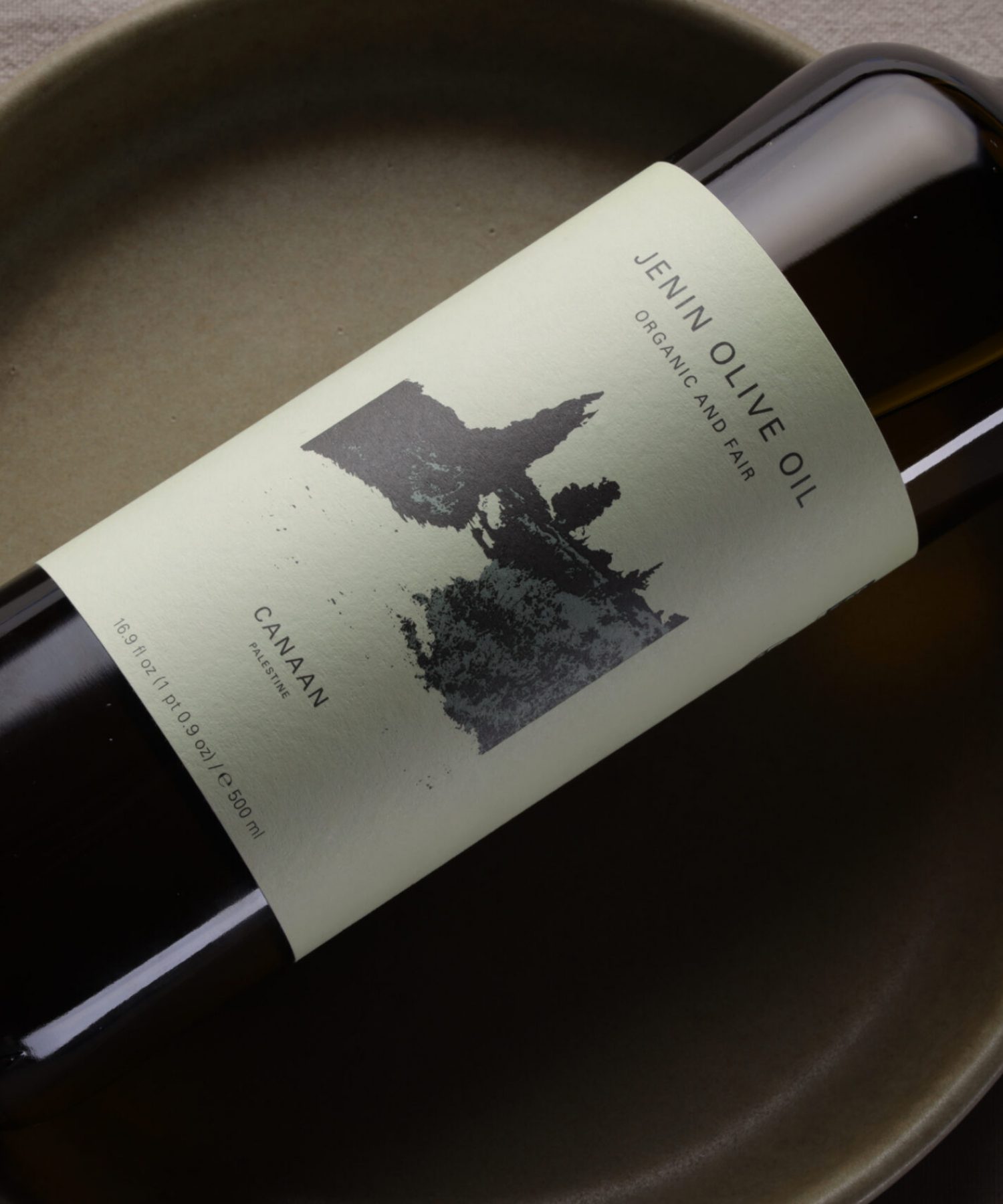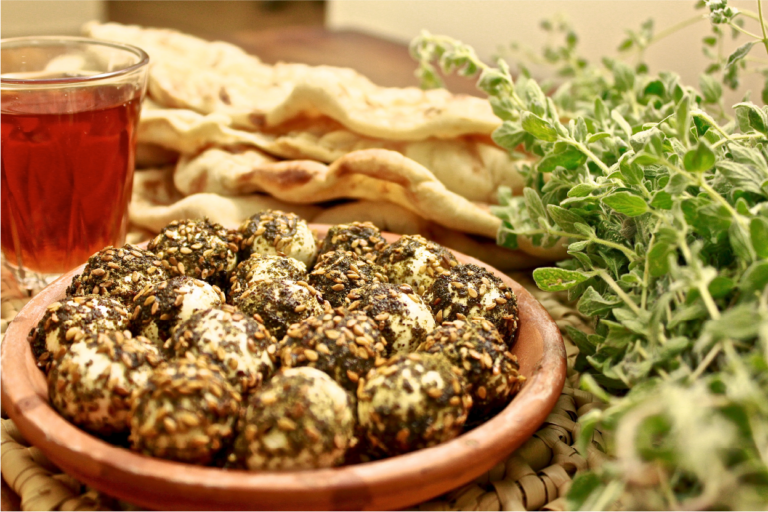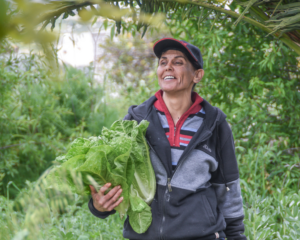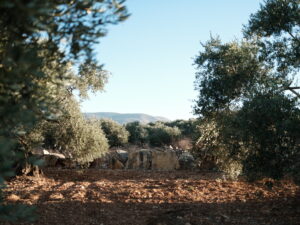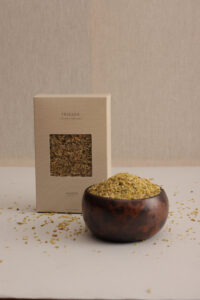How Canaan has celebrated traditional methods and introduced modern practices to reinforce farming communities and alter the fabric of farming in Palestine.
CELEBRATING ROC
Our first certified-regenerative harvest
This October 2024, we commenced Canaan Palestine’s first ROC-certified olive harvest. Our olive crop was awarded Regenerative Organic Certification (ROC™) in the spring of 2024 for our 1,350 olive farmers who cultivate approximately 20,000 acres of ROC-certified olive orchards.
Organic certification requires no use of artificial chemicals; regenerative agriculture goes beyond this with its parameters specific to preserving and enhancing soil health. It aims to invigorate the land, making it more resilient and productive over time. ROC certification encompasses regenerative practices, as well as fair trade and animal welfare standards and wildlife monitoring, as a validating seal of ethical social and environmental practices.
According to Nasser Abufarha, Canaan Palestine’s founder, “ROC certification is an important milestone in Canaan’s journey. For Canaan, ‘Regenerative’ is ecological and cultural sustainability. This certification stands as testament to Canaan’s commitment to nurturing the life of Palestinian farming communities and the life of the land they serve and benefit from. Hence sustaining their lives and cultural heritage.”
LIFE ON A PALESTINIAN FARM
An ode to tradition
LIFE ON A PALESTINIAN FARM
Traditional farming in Palestine is inherently regenerative—this is the natural effect of using farming techniques from antiquity, before modern agriculture practices took root around the world. This dedication to the origin of farming is what makes it the cultural thread that weaves together heritage, resilience, and community to form the tapestry of Palestinian life.
Farmers often rise with the sun, tending to crops situated on terraced hills and rolling fields—their olive groves dotting the countryside. These early mornings are filled with busy hands pruning decaying branches and nurturing new growth, mulching tall weeds to give the earth ground cover, checking the compaction of the soil, and ensuring the health and vitality of their plant’s roots. The daily labors of the farm are often performed as a family, where each member plays their role in service of the harvest. With this hard work comes the celebration of bounty, a time when the scent of fresh produce and earth fills the air, and laughter and stories echo among the farmers as they listen to music and gather for communal meals.
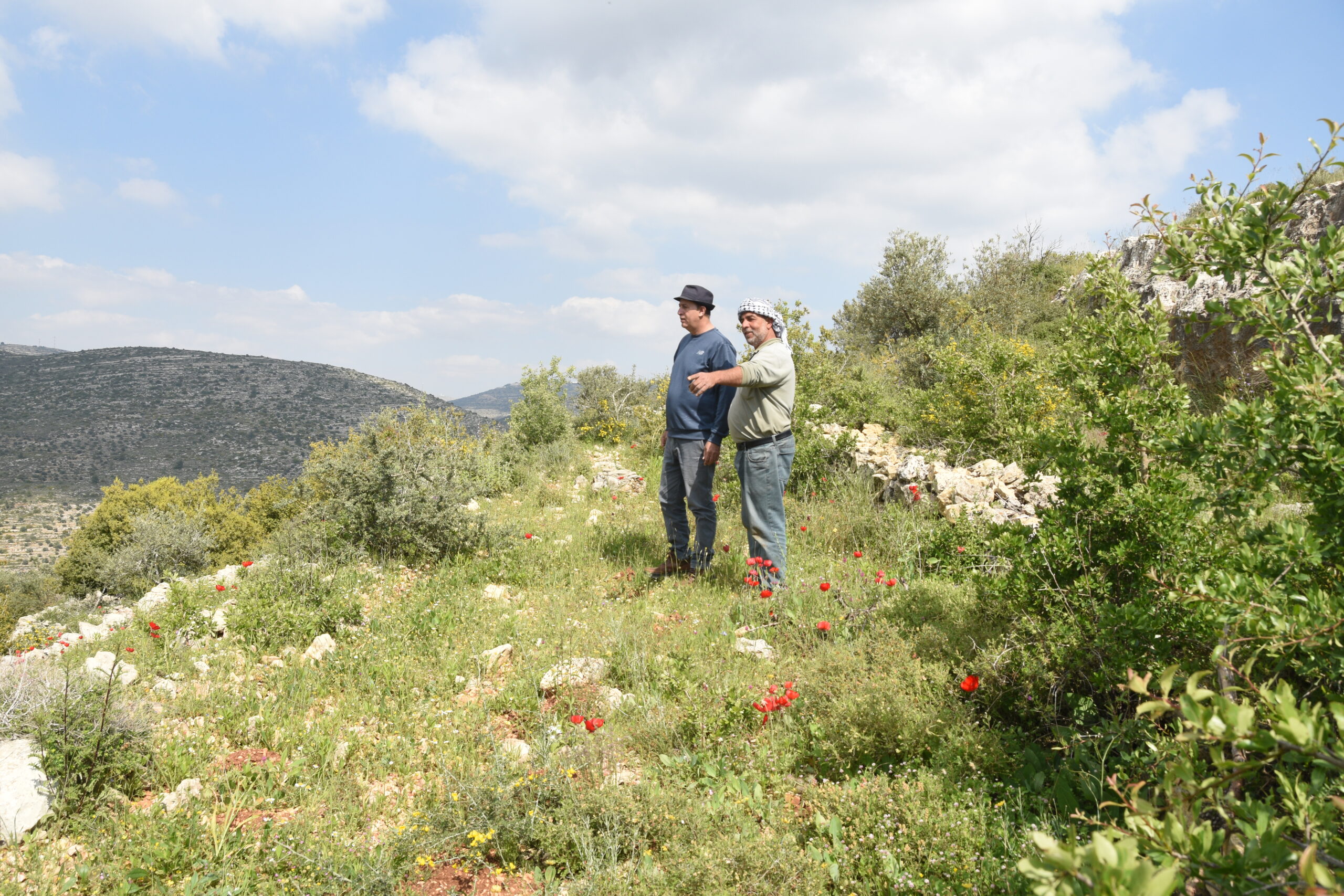
Cultural traditions are a constant part of farming life—both in small, everyday practices and with more momentous festivals marking planting and harvest times. This cyclicality of shared labor and celebration tightens community bonds in spite of challenges; there is a resilience amongst farmers that reflects their deep-rooted connection to the land and their commitment to sustaining Palestinian traditions.
These traditions fall under the umbrella of regenerative agriculture, and are all techniques our farmers employ:
Low Impact Tillage: Preserving soil structure and preventing erosion by keeping the land covered and undisturbed.
Building Biomass: Allowing organic matter to naturally decompose and enrich the soil, creating a living, thriving ecosystem that supports crop growth.
Diversity: Intercropping various plants and trees to increase biodiversity, prevent diseases, and ensure a healthy balance in the ecosystem.
Water Conservation: Using terracing to capture water from seasonal rains, minimizing runoff and maximizing water retention.
Nitrogen Fixation: Incorporating nitrogen-fixing trees and legumes to naturally enhance soil fertility.
Wildlife Protection: Protecting habitats and fostering biodiversity by creating spaces for wildlife to coexist with farming activities.
Tree Spacing: Planting trees wide apart with wild grasses, herbs, and flowers growing in between.
Prickly Pear “Green” Fences: Creating “Green Fences” made of cactus, which creates fire breaks, maintains soil moisture, acts as a windbreaker, provides habitats for small animals, and serves as an additional food crop.
Grazing Animals: Incorporating grazing sheep to stimulate wild plant growth, increase carbon sequestration, and enhance water penetration.
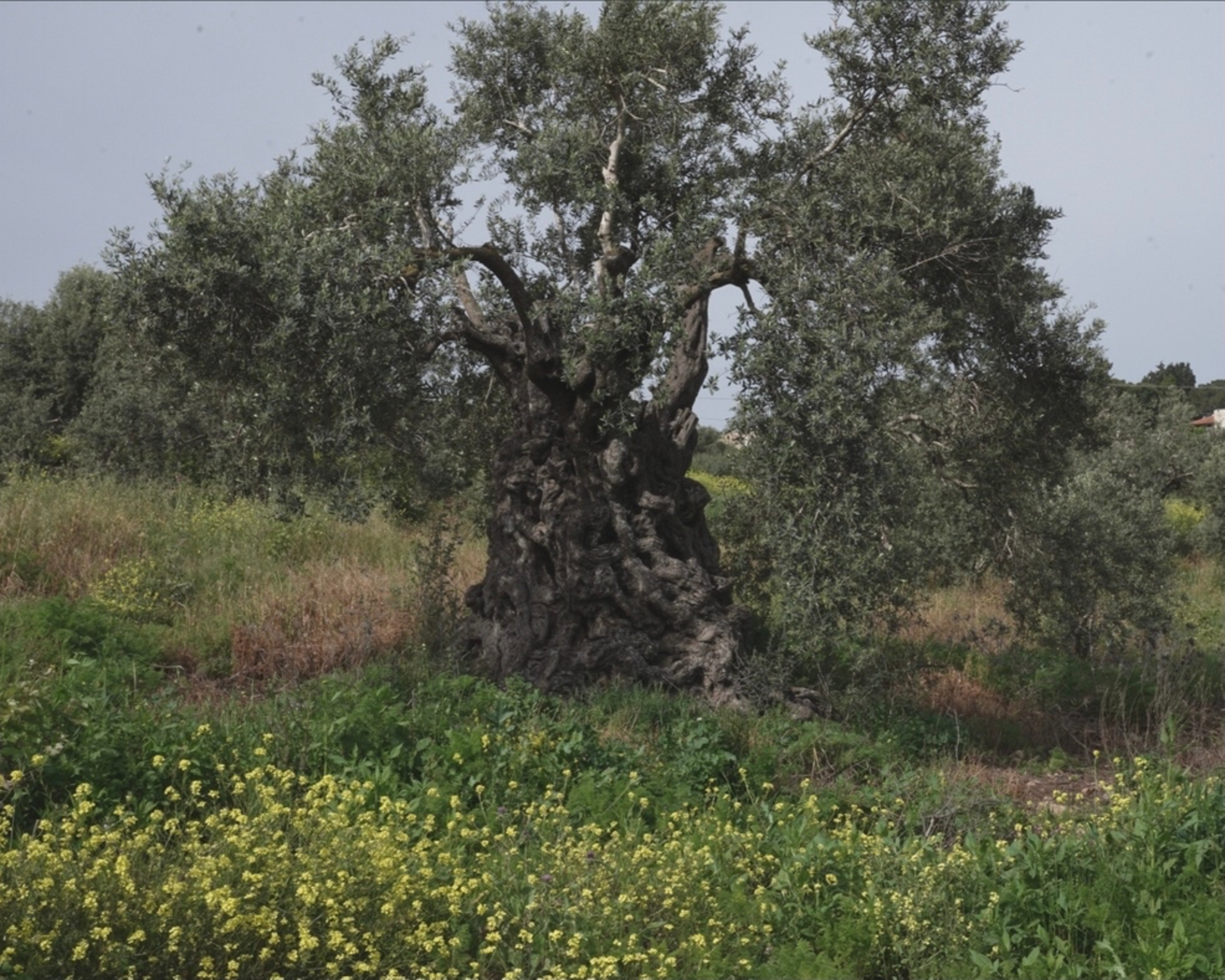

REGENERATIVE SCIENCECombining the old with the new
Carving a space for cultural heritage and sustainable traditions in modern life sits at the heart of our mission. In this endeavor, we see regenerative agriculture as a philosophy that aligns ancient farming wisdom with modern ecological practices. Central to these practices is improving soil health by building up organic matter, increasing soil biodiversity, and enhancing the soil’s ability to store carbon and retain water.
Soil is full of microbial beings, and the first step to ensuring a thriving soil is to let these networks of fungi, tunnels of worms, and other critters remain intact. This is done by keeping the soil undisturbed and protecting it with ground covering and plants that decompose back into the earth. By allowing plants and cover crops to decompose naturally, farmers at Canaan ensure that the soil biomass is fed consistently, creating a rich, vibrant ecosystem below the surface. This, in turn, supports stronger crops, healthier trees, and more resilient farms.
As we enrich the soil with nitrogen and carbon, the soil is able to hold more water, which in turn grows more plants—and on goes the cycle that ensures the future of the land is full of life. We can safeguard this future by employing regenerative practices that are measurable, which requires education. Through workshops, certifications, and training sessions, Canaan actively collaborates with farmers to modernize their farms by introducing practices like nitrogen fixation and soil testing. These trainings also foster a community of knowledge-sharing, where experienced farmers pass down age-old wisdom alongside innovative practices.
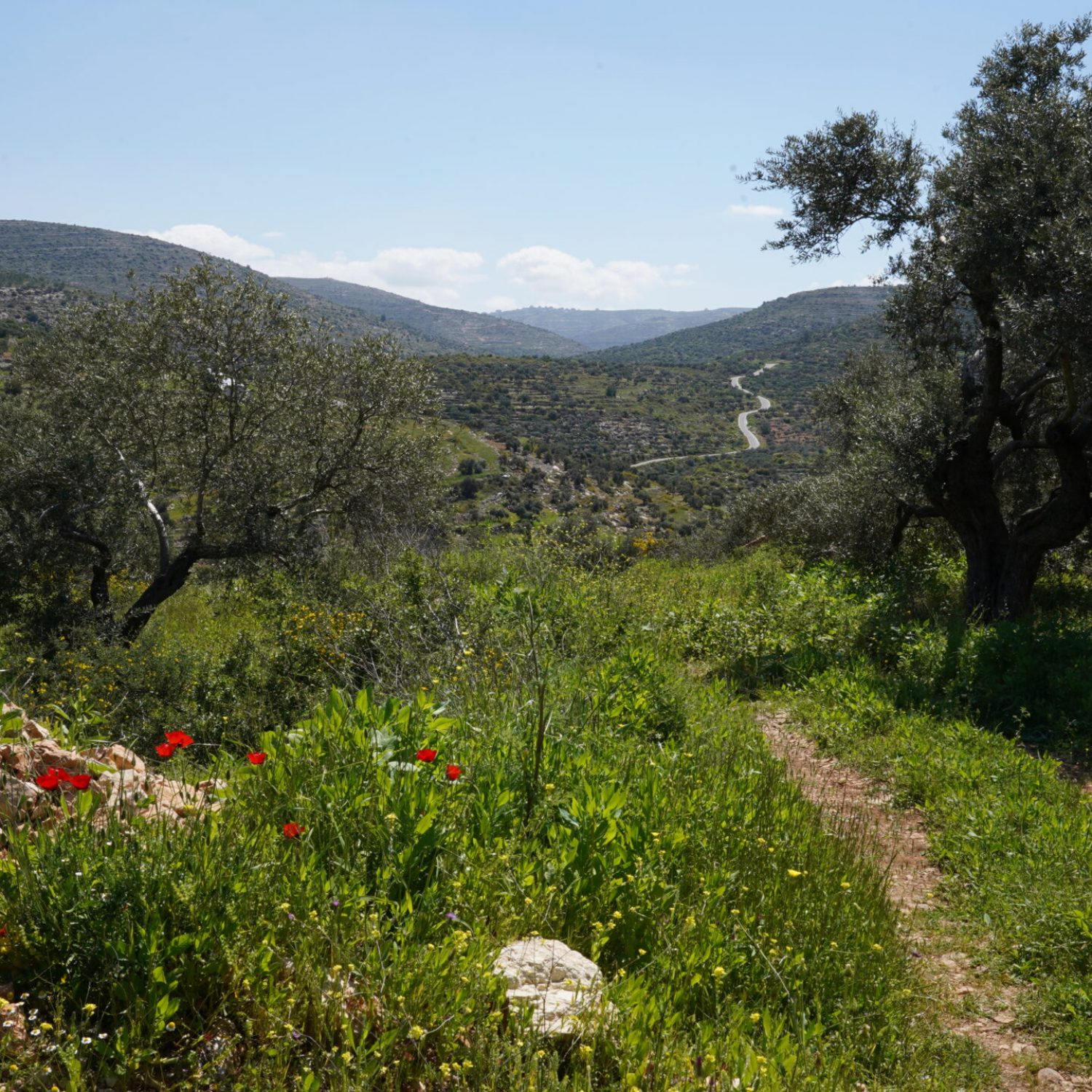
Our workshops give us the opportunity to educate farmers on how to conduct on-site assessments to ensure they are meeting regenerative standards, including testing for:
Root Growth: Roots are of course how plants get water and nutrients, but they also help build organic matter and feed the soil food web, which in turn improves fertility and water retention. Testing for root growth includes seeing what direction roots are growing in and how dense the roots are.
Ground Cover: Ground covering is a form of protection that helps prevent soil erosion, reduces water loss from evaporation, and ensures food is supplied to both soil organisms and the plants themselves. Testing is conducted by measuring what percentage of the ground is covered by organic material.
Soil Aggregate Stability: Soil aggregates, or groups of particles bound together by roots, fungi, and the glue-like substances these organisms produce, are essential in keeping organic matter in the ground to help with water filtration and provide a habitat for organisms. This is tested by assessing disaggregation of the soil when moistened.
Soil Compaction: Compaction results from the use of heavy machinery or hoof traffic from livestock. Compression of the soil rearranges it, destroying aggregates and increasing bulk density while reducing porosity. Compaction is assessed through penetration tests that measure the hardness of soil when applied with a downward force.
Soil Health Using Smell: The earthy smell of soil is generated by specific bacteria and indicates that microbes are active. A sour or rotten smell can indicate that soil is waterlogged and has allowed for bacteria that thrives in low-oxygen conditions. These cues tell farmers what needs to change to help the vitality of the soil.
Soil Crusting: Surface crusting develops when soil is left bare, exposing surface aggregates to the elements and drying out; this can be prevented through mulching.
Plant Health Through Observation: The health of the soil can be measured through the physical wellbeing of plants based on leaf color, signs of wilting, height, and uniformity.
Soil Health Through Color: The color of the soil can indicate how much organic matter is present; the more organic matter you have, the darker the color.
Ponding: Ponding, or standing water, happens as a result of poor water infiltration, which could occur as a result of crusting, compaction, or inherent soil properties. When water is received at a rate greater than the infiltration rate of the soil, runoff moves downslope or ponds on the surface, which can lead to erosion or waterlogged soil.
Macro Life Diversity: The amount and types of organisms within the soil speaks to its ability to support biodiversity and complex food webs. These organisms play a key role in regenerative farming, and can include creatures such as earthworms, beetles, ants, or fungi. Most of these organisms are active and abundant when soils are moist and temperatures are warm, and this diversity is tested through excavation and observation.

The intention of requiring these tests is to help farmers better connect with their land and make adaptive management decisions in response to what they see on the ground. Integrating these practices creates a powerful synergy that benefits both the environment and the farming communities.
We have welcomed modern agricultural technology to complement the traditions that have fed the land and the people for millennia—in doing so, Canaan is fostering a resilient and thriving agricultural landscape for the future of the community and the ecosystem.
CANAAN’S CORE
How our values have shaped our impact
Ultimately, the focus of regenerative agriculture is to nurture the land rather than create quick, high-yield crops facilitated by chemical fertilizers and pesticides. By emulating nature rather than working against it, our farmers grow nutrient-dense, high-quality foods that honor both our heritage and the future, ensuring that farmers can proudly stand behind their work while preserving ancient cultural farming wisdom.
Canaan’s efforts in regenerative agriculture are not only about producing high-quality products; they are also about preserving a way of life and providing a sustained source of food. Through careful stewardship of the land and the application of regenerative techniques, Canaan is fostering a resilient agricultural landscape that supports both the environment and local communities.
This is how our products are a true reflection of centuries-old farming wisdom and the resilience of Palestinian farmers. Through regenerative farming practices, these farmers produce some of the highest quality olive oil in the world, rich in nutrients and packed with flavor. The impact goes beyond the bottle—Canaan’s olive oil tells a story of sustainability, cultural preservation, and life sustenance. By supporting these small-scale farmers, Canaan ensures they have the resources and knowledge to thrive, even in challenging conditions. This partnership elevates the livelihoods of Palestinian farming families, providing them with a sustainable income while preserving agricultural heritage for future generations.

These ancient wisdoms and the modern cultural trends of responsibility towards Mother Earth and ethical trading are where the inspiration for Canaan’s values stem from; we’re committed to being regenerative to ensure a culturally relevant farming life, environmental sustainability, and community well-being—and this in turn yields a more sustainable, higher-quality, healthier product. With the ROC™ certification, Canaan is taking part in the global movement toward regenerative agriculture, proving that traditional methods and modern science can work together to create sustainable, thriving farms.
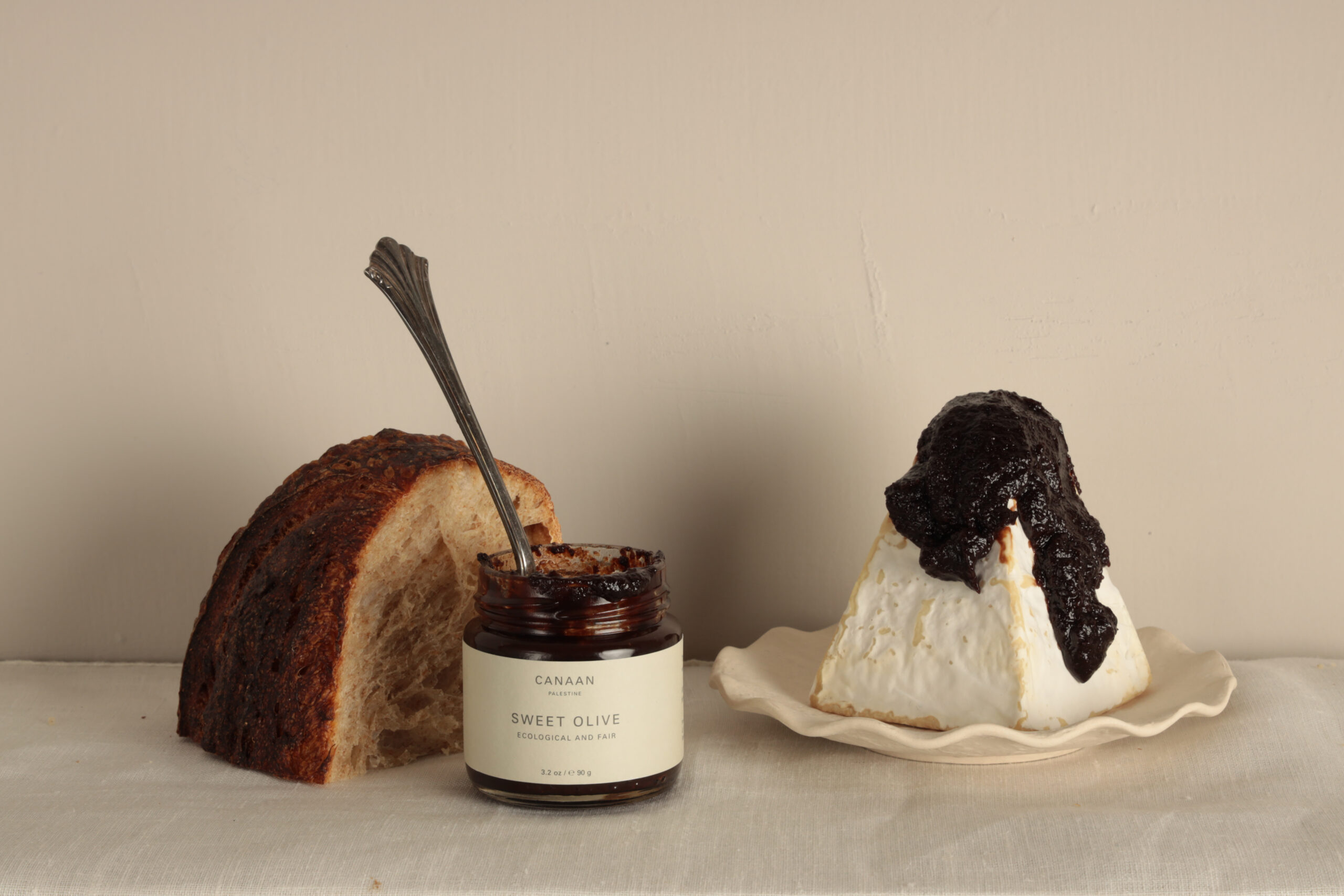
Sweet Olive Recipe
Enjoy this delicious sweet spread on your favorite cheeses and crackers. INGREDIENTS: Sweet Olive Cheese Camibert or brie cheese depending on your taste.


